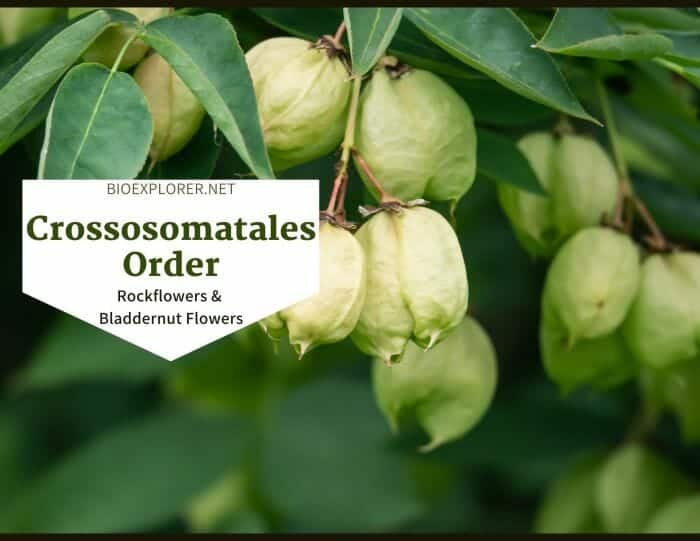
Crossosomatales is a small order of flowering plants consisting of woody shrubs and trees. It is distributed in various regions across the northern and southern hemispheres. However, most of the families are endemic in one geographical region.
Table of Contents
Crossosomatales Families
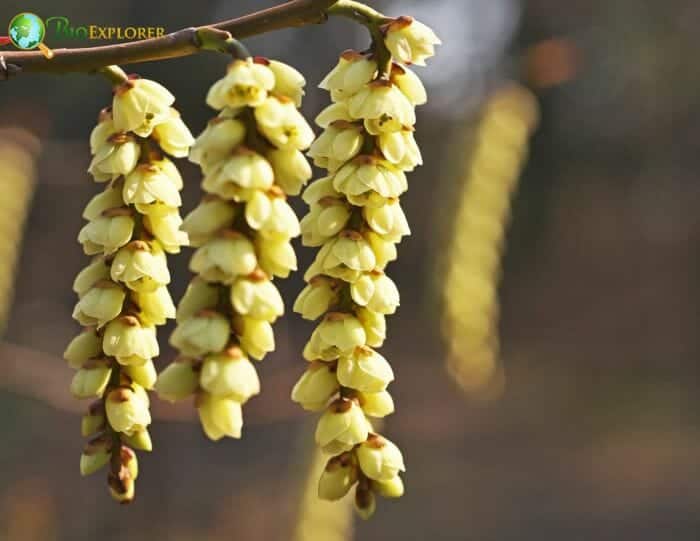
The members of the Crossosomatales usually have toothed leaf margins, often solitary flowers, 4-5 sepals and petals, superior ovary, and endospermic seeds. The rock flowers, bladdernuts, and guyalone are members of the Crossosomatales order.
Crossosomatales or the Rockflower order is placed under Rosid eudicots and consists of 7 families and 12 genera.
- Aphloiaceae (Albino-berry family)
- Crossosomataceae (Rockflower family)
- Geissolomataceae (Guyalone family)
- Guamatelaceae
- Stachyuraceae (Stachyurus family)
- Staphyleaceae (Bladdernut family)
- Strasburgeriaceae (Tawari family)

Crossosomatales Distribution
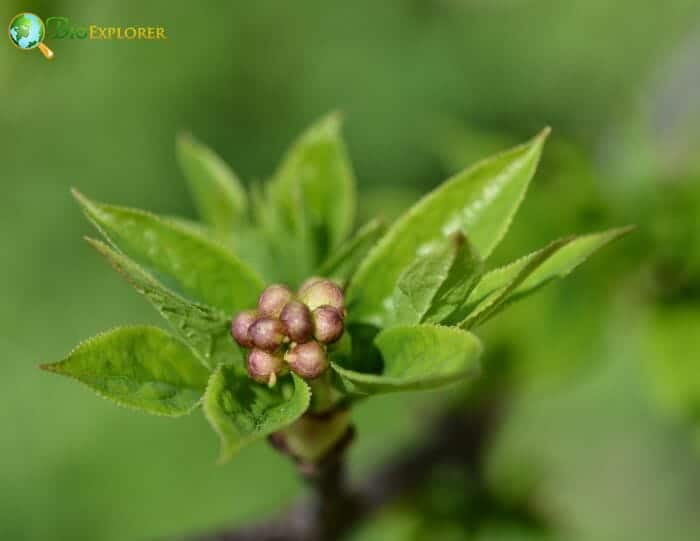
Crossosomatales is a small order, and the members are in various regions across the Northern and Southern hemispheres. The species of Crossosomatales occupy different biomes. The plants are found in the temperate forest, the rainforest of the tropics, and the deserts of North America.
Almost all families of the Crossosomatales are found only in one geographic region (endemism). However, the Staphylaceae (2 genera and 45 species[1]) manifest broad distribution in the Northern Hemisphere.

Crossosomatales Characteristics
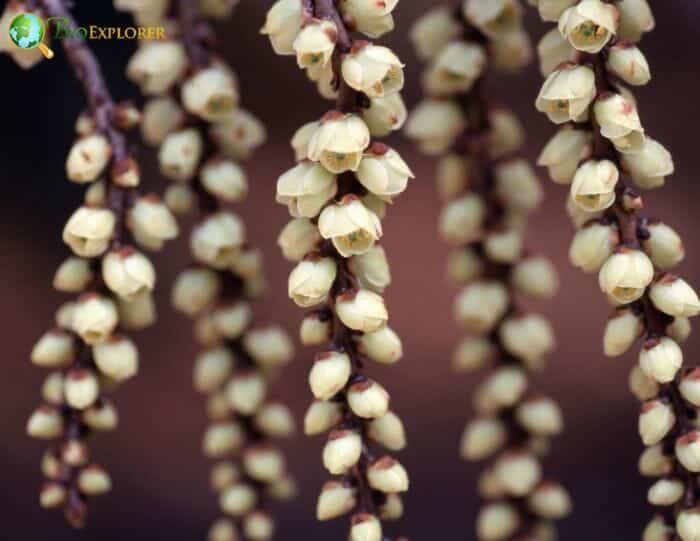
- Plant type: Members of the Order Crossosomatales are woody shrubs and trees.
- Stem: The young stems have solid or hollow internodes. Plants have cork cambium. There is no internal phloem.
- Leaves: The leaves of the Crossosomatales plants are alternate, opposite, or whorled. The leaf margins are toothed.
- Flowers and inflorescences: The flowers are primarily solitary. Others are clustered in spikes, raceme, or panicles. The flowers have well-developed nectaries.
- Sepals and petals: Most of the perianth have 4-5 sepals and petals.
- Stamens and carpels: The flower’s stamens are 8-many, and the carpels are 1-5.
- Ovary and fruit: The ovary is superior, and the fruit is dehiscent or berrylike.
- Seeds: The seeds are endospermic that often have aril.

Crossosomatales Flowers and Reproduction
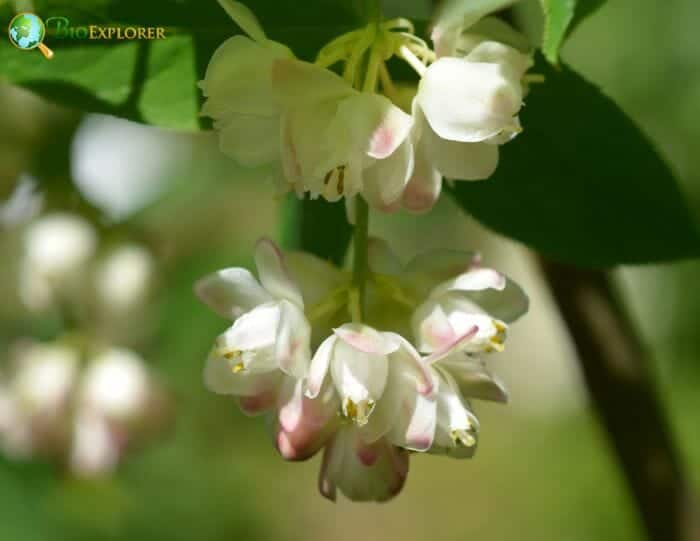
Most flowers of the Crossosomatales are usually solitary, with often 4-5 sepals and petals. The base of the calyxWhat is calyx?A collective term for all the sepals of a flower; the lowermost whorl of floral orgrans (Plural form is calyces)., corollaWhat is corolla?A collective term referring to the petals of a flower., and the stamens are joined into a floral cup. The outer sepals are smaller than the inner ones. The flowers have well-developed nectaries. The hypanthium is present. Some flowers, however, lack hypanthium.
Crossosomataceae (4 genera and 12 species) plants are bisexual, andromonoeciousWhat is andromonoecious?A plant with staminate and perfect flowers, but missing pistillate flowers., gynomonoecious, or polygamomonoecious. A few flowers are unisexual. The flowers are regular, medium-sized, and solitary (terminal or axillary). The flowers have free hypanthium. The flowers of the Crossosomataceae have distinct calyx and corolla. There are usually 4-5 regular, persistent, and imbricateWhat is imbricate?overlap or cause to overlap; in botany terms, scales, sepals, or plates having adjacent edges overlapping; with margins of structures overlapping like shingles on a roof. sepals in the 1-whorled calyx. The 1-whorled corolla usually has 4-5 regular, imbricate, clawed, and white petals.
Staphyleaceae plants are hermaphroditeWhat is hermaphrodite?An organism or structure possessing both male and femal reproductive organs; a flower with both stamens and pistils. Other synonyms: bisexual or monoclinous., monoeciousWhat is monoecious?Pertaining to plants, individuals of which bear both staminate and pistillate flowers, but not necessarily perfect flowers., dioeciousWhat is dioecious?Pertaining to plants, individuals of which bear either staminate or pistillate flowers, but not both., or polygamomonoecious. Some species are unisexual. The small, regular, and bracteateWhat is bracteate?Possessing or bearing bracts. flowers are in drooping panicles or racemes. The free hypanthium is absent. There are distinct calyx and corolla in the perianth. The 5 sepals are often petaloid in 1 whorl. The corolla is also 1 whorl with 5 regular and imbricate petals. There are 5 stamens in the androecium. These stamens are isomerous with the perianth. The gynoecium has 2-3 carpels; apocarpous or syncarpousWhat is syncarpous?Flowering having united carpels; Contrast apocarpous.. The stigma is a wet type.
Flowers of Stachyuraceae (1 genus and 7 species) are hermaphrodites or polygamomonoecious. Unisexual flowers are sometimes present. The small and regular flowers exist in pendulous or racemose inflorescences. The flowers are 4-merous. The calyx comprises 4 regular and imbricate sepals in two whorls. The corolla has 4 imbricate and sessile petals. Flowers have no free hypanthium.
The flowers of Strasburgeriaceae (2 genera and 2 species) are all bisexual. The regular flowers are solitary. The calyx and the corolla are distinct in the perianth. The calyx is spiral, and the corolla is whorled. The sepals are 8-10; leathery. The petals are 5; sessile and fleshy. These petals are cream to yellow. The flowers of the Strasburgeriaceae have a circular nectar gland with radiating spikes. The 10 free filaments are also cream to yellow. The carpels of the flowers are 4-7; fused. The style is single, long, and straight. The pollination is by birds.

Crossosomatales Family Differences
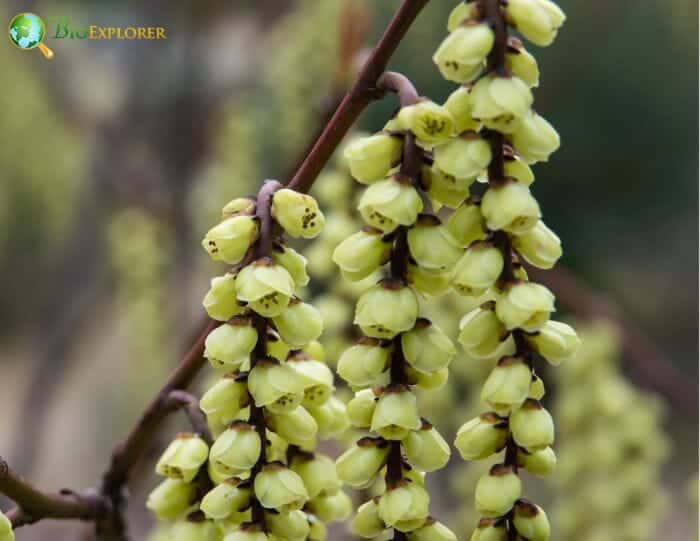
Aphloiaceae
- Members are evergreen shrubs or trees.
- The leaves of the Aphloiceae are alternate, 2-ranked, and serrate. Often the persistent stipules are present.
- The flowers are found in the axils of the leaves; on stalks, or on pedicels.
- The perianth of the flowers is undifferentiated. The tepals are usually 4-5 and rarely 6.
- The stamens are many. There is only 1 carpel in the ovary.
- The fruit is a berry.

Crossosomataceae
- The species of the Crossosomataceae are shrubs; glabrous, sometimes spinescent. The plants are xerophyticWhat is xerophytic?A plant that is adapted to dry or arid habitats (definition for xerophyte)..
- The leaves of the plants are deciduous and small. They are simple and alternate or opposite. These leaves are exstipulateWhat is exstipulate?Without stipules; Stipule is a small structure of appendage found at the base of some leaf petioles. or minutely stipulate. The lamina is entire, and the lamina margins are entire or apically tri-dentate.
- The plants are hermaphrodites. Other species are unisexual. The flowers are terminal or axillary solitary.
- The calyx and the corolla are distinct in the perianth. The sepals are usually 4-5 in 1 whorl, and the petals are also 4-5 in 1 whorl.
- The stamens are 20-100-many[2]. The gynoecium usually has 1-5 carpels.
- The ovary is superior, and the fruit is a follicle.
- The seeds are thin to copiously endospermic (oily).

Geissolomataceae
- The members of Geissolomataceae are non-succulent small shrubs. They are also xerophytic.
- The leaves of the plants are opposite, simple, and leathery. They are sessile or subsessile. The leaves are stipulate. The lamina and the lamina margins are entire.
- The flowers are bisexual or unisexual. The fertile flowers are bisexual. The flowers are terminal or axillary solitary.
- The perianth is sepaline with 4 imbricate calyx lobes in 1 whorl.
- There are 8 stamens in 2 whorls (4+4). The gynoecium has 4 carpels.
- The ovary is superior, and the fruit is a capsule.
- There are 4 endospermic seeds per fruit.

Guamatelaceae
- The species of Guamatelaceae are shrubs.
- The leaves of the members are simple and opposite. The leaves are stipulate, and the lamina is entire.
- Flowers are all bisexual. The inflorescence is in racemes.
- The calyx and corolla are distinct in the perianth, with 5 lobes of sepals in the calyx and 5 lobes of petals in the corolla.
- There are 10 stamens in 1 whorl. The gynoecium has 3 carpels.
- The ovary is superior, and the fruit is a follicle.
- The seeds are many per fruit; non-endospermic.

Stachyuraceae
- Members of the Stachyuraceae are small trees, shrubs, or lianas. The species are self-supporting or climbing.
- The leaves of the plants are simple, alternate, petiolate, and stipulate. The lamina is entire, and the lamina margins are serrate or serrulate.
- The plants are hermaphrodite or polygamomonoecious. A few species are unisexual. The flowers are aggregated in pendulous, racemes, or spikes.
- The calyx has 4 sepal lobes in 2 whorls (2+2)[3]. In addition, there are 4 petals in the corolla in 1 whorl.
- There are 8 stamens in 2 whorls, and the flowers have 4 carpels.
- The ovary is superior, and the fruit is a berry.
- There are many endospermic (oily and proteinaceousWhat is proteinaceous?Containing protein; made of or containing protein; Protein is a complex organic compound made up of amino acids linked together by peptide bonds.) seeds per fruit.

Staphyleaceae
- Plants of Staphyleaceae are small trees or shrubs.
- Generally, the leaves are compound. However, some species have simple and opposite leaves. The members’ leaves are petiolate and stipulate. When the leaves are compound, they are unifoliate, ternate, or pinnate. The lamina margins are often serrate or dentate.
- The plants of Staphyleaceae are hermaphrodite, monoecious, dioecious, or polygamomonoecious. Other species are unisexual. The flowers are in panicles or racemes.
- The calyx has 5 petaloid sepals, and the corolla has 5 petals.
- There are 5 stamens; free of the perianth. The carpels are 2-3.
- The ovary is superior to partly inferior. The fruit is a follicle, schizocarp, capsule, berry, or drupe.
- The seeds are copiously endospermic (oily).

Strasburgeriaceae
- The members of Strasburgeriaceae are trees.
- The plants have large leaves. The leaves are simple, alternate, petiolate, stipulate, and non-sheathing. The stipules of the leaves are intrapetiolar and concrescent. The leaves have remotely dentate lamina margins.
- All plants are bisexual. The flowers are solitary.
- The sepals are 8-10; leathery and increase in size acropetally. There are 5 imbricate petals in the corolla.
- There are 10 stamens in the androecium; 1 whorl. The carpels are 5; isomerous with the perianth.
- The ovary is superior, and the fruit is capsular or a berry.
- The seeds are endospermic (fleshy).

Crossosomatales Example Species
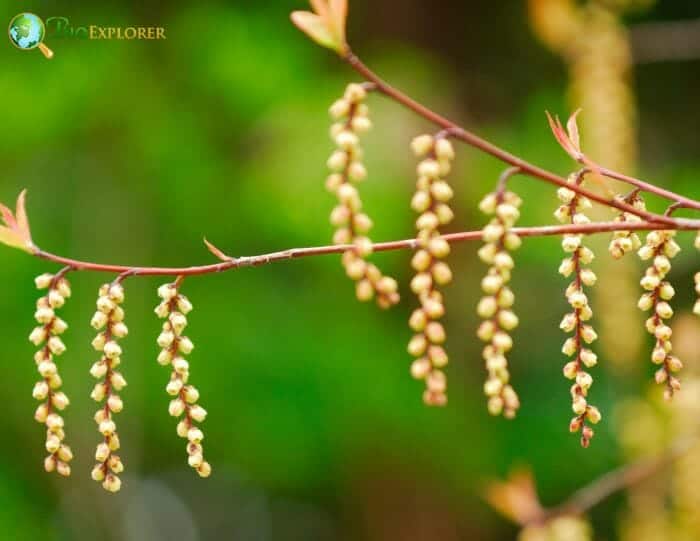
Most species under Crossosomatalaes are not familiar with cultivation and are not very important economically. However, some members offer uses and benefits. Below are the example species of the Order Crossosomatales.
- Albino-berry – The tree is harvested by the locals for different uses. The leaves are used to make tea. The root is used in traditional medicine. The wood is used for making handles, spoons, combs, and withies.
- California rockflower – The California rockflower is occasionally cultivated as an ornamental plant.
- Ragged rockflower – Ragged rockflower is an ornamental plant commonly used as hedges and landscaping.
- Chinese stachyurus – The Chinese stachyurus is an attractive garden plant.
- Early stachyurus – The Early stachyurus is a beautiful ornamental plant commonly used as beds, borders, and wall-side borders in the garden.
- Willow Leaf Spiketail – The Willow leaf spiketail is used for landscaping.
- Caucasian bladdernut – The Caucasian bladdernut is an ornamental plant used for gardening and landscaping.
- European bladdernut – The plant is usually planted in the garden. The seeds of the European bladdernut are edible, having a pistachio-like taste.
- Muttonwood – The muttonwood is a plant with ornamental value.
- Tawari/whakou – The tawari plant produces much nectar that bees consume to make monofloral honey. The flowers of the tawari are also used to make necklaces and adornments.


























